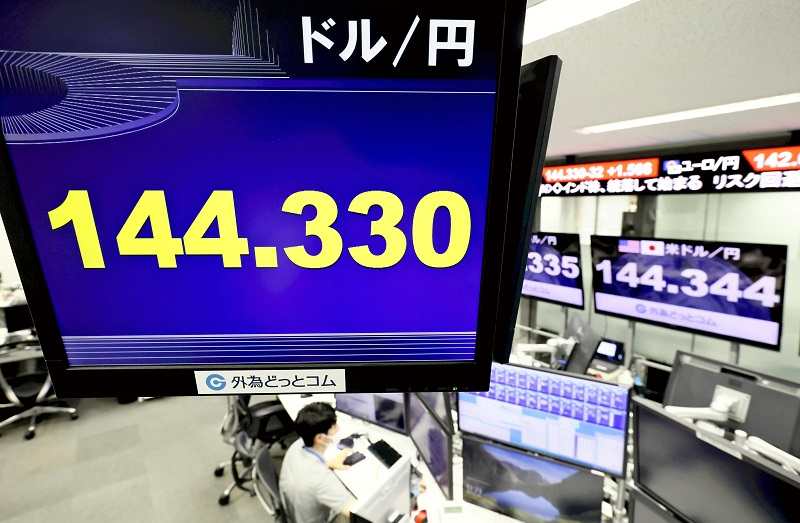Few effective options for Japanese govt, BOJ for dealing with weakening yen

A monitor shows the exchange rate of ¥144.330 to the dollar on Wednesday in Tokyo.
16:36 JST, September 8, 2022
In the past, the government and the Bank of Japan have directly intervened in foreign exchange markets by selling or buying yen when there have been excessive movements in the yen’s value.
However, the government is cautious about intervening during a weakening phase due to a poor track record of yen-buying and dollar-selling, raising questions about the effectiveness of an intervention.
When the yen weakened to about ¥133 to the dollar in April 1998, the government and the central bank embarked on a yen-buying, dollar-selling spree.
About ¥3 trillion had been spent on the intervention by June that year, but the depreciation was not corrected. The yen kept weakening and touched ¥147 to the dollar in August.
A yen-buying intervention requires the government to sell foreign currency and purchase yen. The amount of foreign currency on hand limits the extent of such an intervention.
The Finance Ministry announced Wednesday that Japan had foreign currency reserves of about $1.29 trillion (about ¥186 trillion) as of the end of August, of which only about ¥20 trillion was foreign currency deposits that could be spent immediately.
Another concern is a situation in which a weak dollar leads to higher prices in the United States, which has made bringing inflation under control a priority.
“There’s no way Japan can intervene in the markets at a time when inflation remains high in the United States,” a Japanese government source told The Yomiuri Shimbun.
The BOJ does not appear to have a solid plan for dealing with a weakening yen.
Even if the BOJ were to follow the lead of the U.S. Federal Reserve in raising interest rates, “Japan’s economic environment is very different from that of the United States, where wages are also growing significantly” a senior official said. “The situation [in Japan] is not conducive to raising interest rates.”



